At the risk of eliciting only a pained smile from my breathless readers and witty readers, I maintain: a walk along the deeply snow-covered foot of the Nordkette is a unique experience. The route from Sadrach via Höttinger Bild to Gramart and Hötting can certainly be described as ‘fairytale-like’.
This year, winter has been kind to us: deep snow-covered forests and gleaming white mountain peaks promise unique experiences in the great outdoors, even without skis. For me, winter hiking has been an integral part of my winter pleasures for several years now. And I am right in line with the trend, because winter hiking is more popular than ever before. These winter hiking joys begin for me in Innsbruck with the use of public transport. Ideal in this case is the bus line A, which you leave only at the final station in Sadrach. Because that’s where a unique, even fairytale walk begins.
A cross without Christ
Slightly uphill, coming from Sadrach, you first reach a plateau with a fantastic view of the magnificent mountain panorama, which in winter wraps itself around the capital of the Alps like a silken shawl. From Planötzenhof which towers over the city, one has perhaps one of the most beautiful views of Innsbruck. And here you can in winter admire something that is almost ‘the custom’ in Tyrol: a cross without a Christ figure. To this day I have not been able to find out why figures are taken from the crosses.
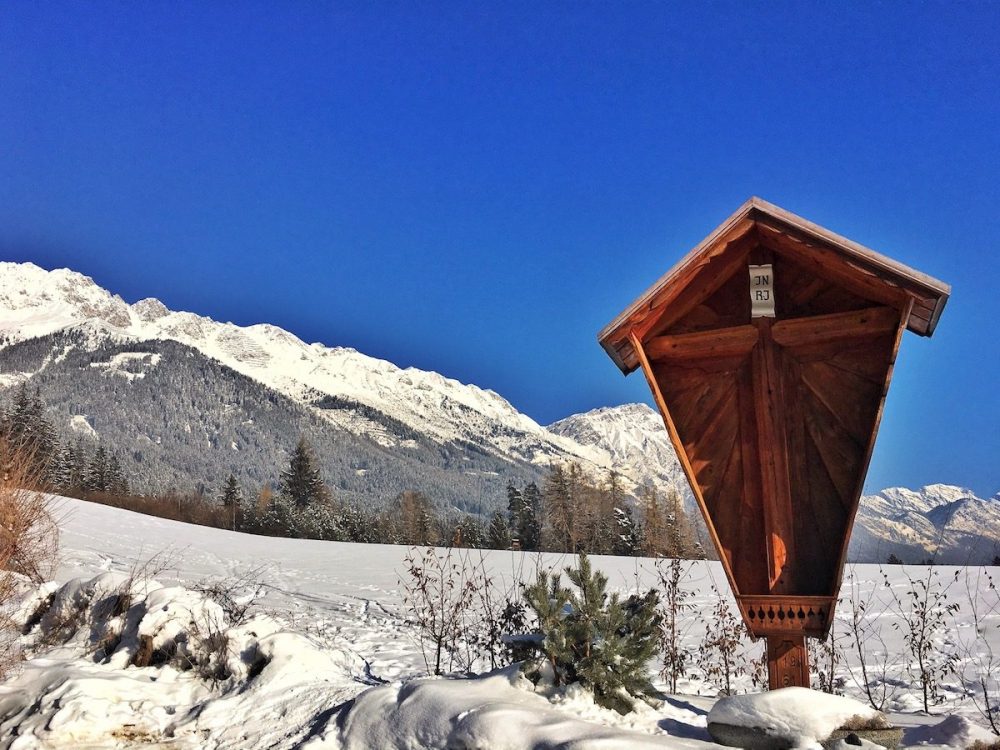
The plateau at Planötzenhof with the cross without the figure of Christ. © W. Kräutler
So this time the destination was not the inn, but a little church in the middle of the forest: the so-called Höttinger Bild. An already legendary centre of pilgrimage close to the city. And believe it or not, it is not uncommon to see students striving uphill with serious expressions. The curious hiker will find out why a little later. You can now either take the forest road (if it has snowed) or the narrow hiking trail up to the chapel.
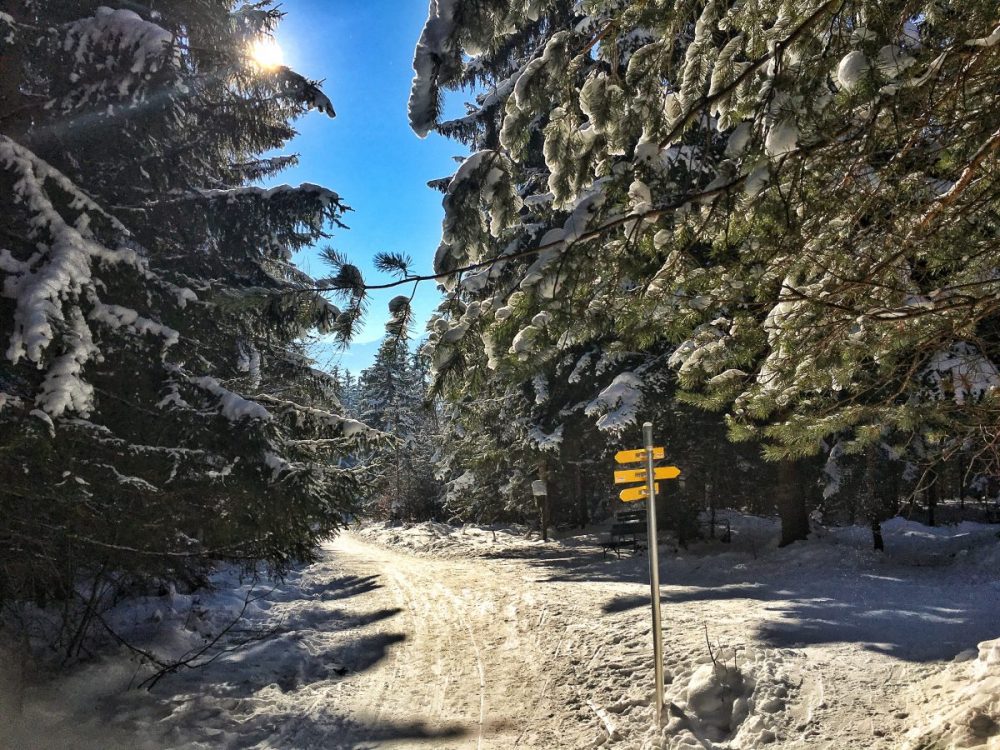
Deeply snow-covered: the footpath from Planötzenhof to Höttinger Picture. © W. Kräutler
The chapel with the Höttinger Bild stands on a mystical place
The ‘Höttinger Bild‘ is situated at the foot of the mighty, almost threatening Nordkette. A place that is as mystical as it is steeped in history. In summer, right next to the little church, you can see a depression in the slope that is difficult to make out in winter. It is the mouth of a former medieval mining gallery, a so-called ‘Knappenlochs‘, which is still visible as a depression in the picture below right of the wooden pavilion. And in front of it a little fountain splashes in summer to the delight of many Innsbruck residents. The water not only tastes delicious, it is also, according to many city dwellers, suitable for combating all kinds of physical ailments. Well then!
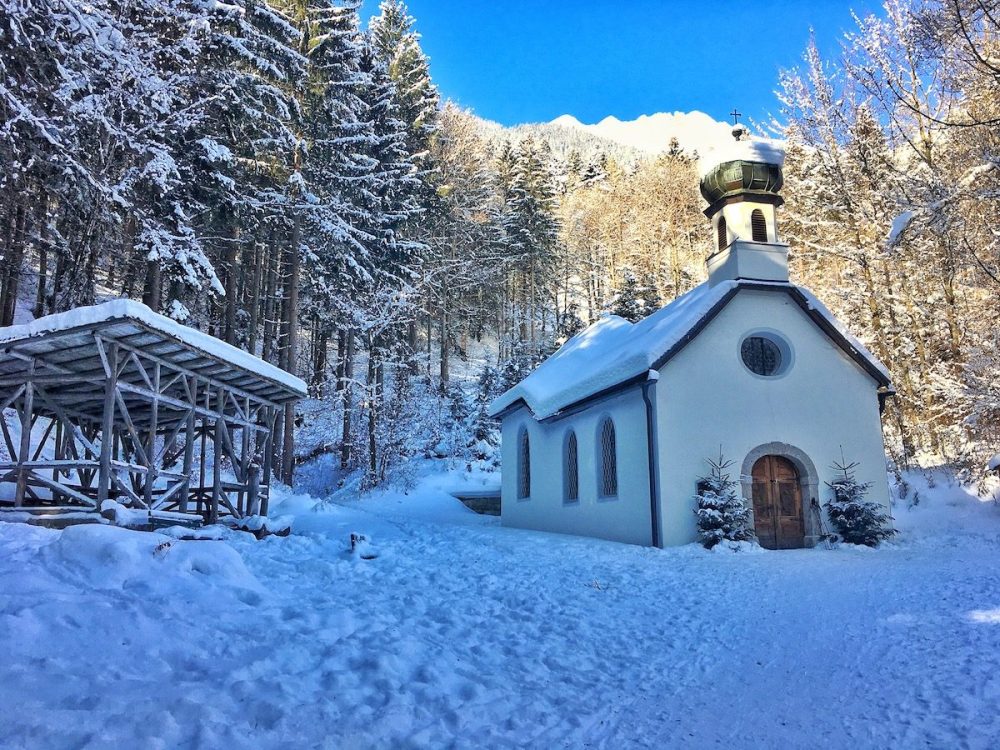
It is hard to believe: the chapel with the ‘Höttinger Bild’ is a pilgrimage destination for students. © W. Kräutler
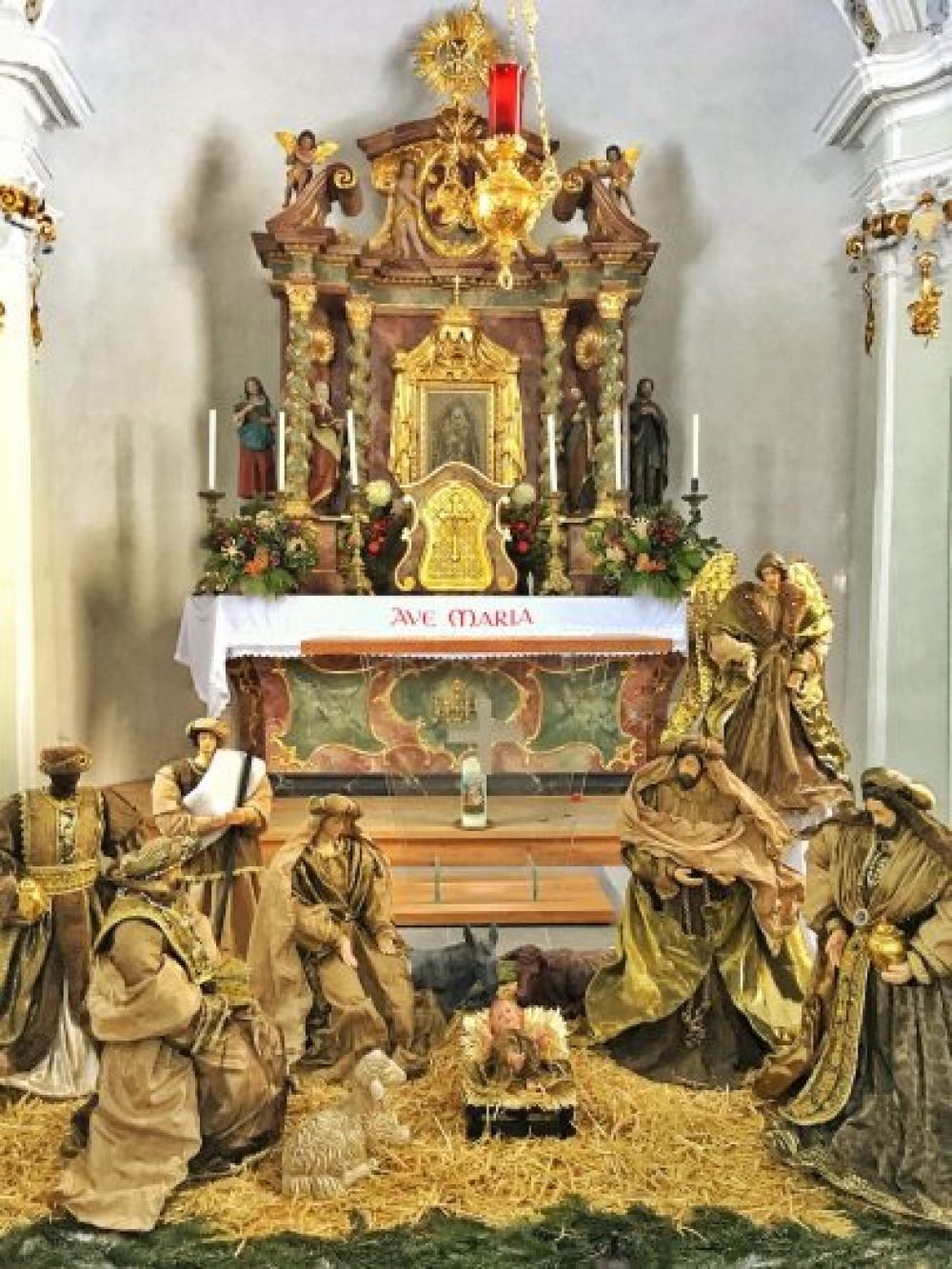
The ‘Höttinger Bild’ is embedded in the altar of the church. © Kräutler
If one believes the legend, then in 1675 a student brought a copperplate of the image of Maria Waldrast into the forest above Hötting and fixed it to a larch tree. After numerous visits to the site, the student apparently passed his exams, contrary to expectations. This did not escape the notice of other students. Thus a pilgrimage church was built, which contains the copper engraving in its altar, which since then has been called “Maria der Studenten Zuflucht” (Mary of the Students’ Refuge)
In 1777 the former little wooden church was transformed into the present brick chapel. And it is said that even today students make a pilgrimage up from the town in their distresses. A scoundrel, who thinks evil of it, because the Planötzenhof lies quasi around the corner..
What many visitors of the Höttinger picture do not know: Vis a vis of the church stands an altar on a flat surface, which was artificially heaped up centuries ago. It is the overburden from the many mining tunnels in this area. For here, in the Middle Ages, every stone was turned and every cleft was mined
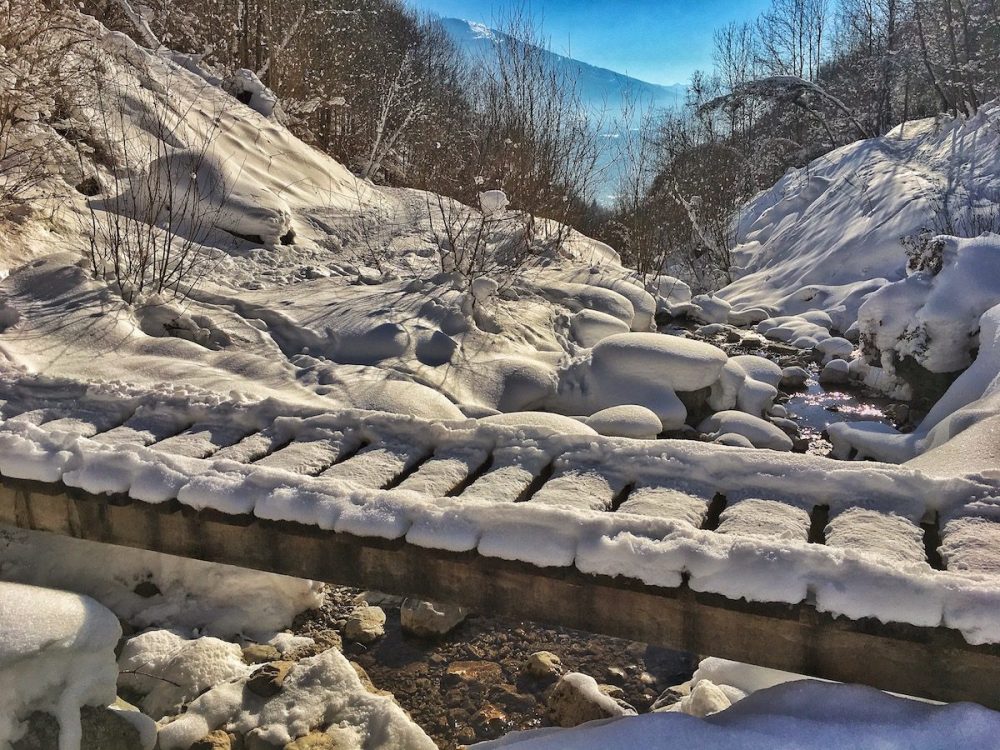
This looks like an adventure: The snow-covered bridge over the Höttinger Bach. © W. Kräutler
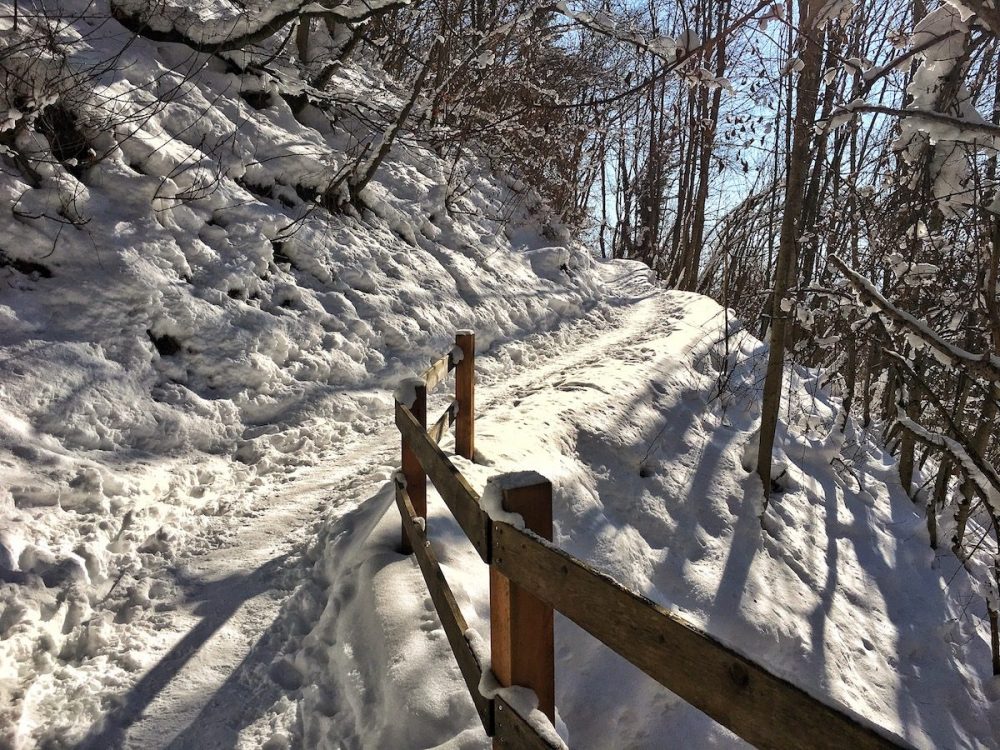
The winter hiking trail between Höttinger Bild and Gramart has ‘fairytale trail quality’. © Werner Kräutler
From this place the winter hiking trail continues to Gramart. For me Gramart still has something mysterious, something inexplicable. My guess: in the Middle Ages, miners cleared this area to build their modest huts. This area was located in the middle of the former mining district at the Höttinger Graben. For the musical contemporaries, but above all for friends of real folk music like me, Gramart has become a dear term mainly because of the Gramart music has become a familiar term.
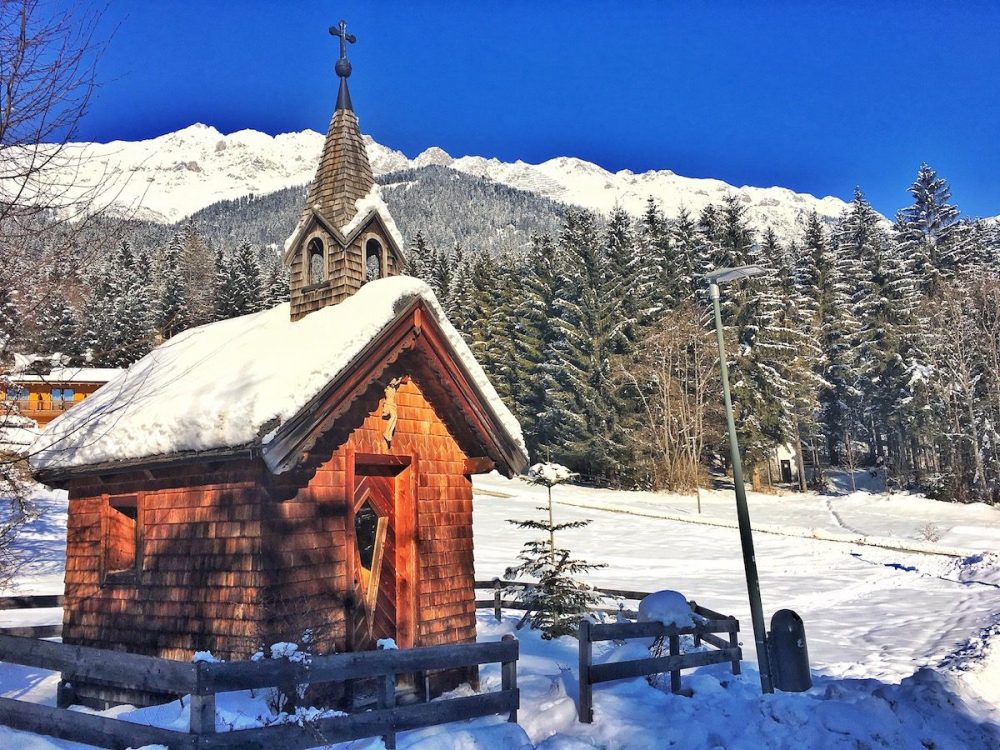
The wooden chapel in Gramart in front of the towering Nordkette. © Werner Kräutler
Hiking poles are needed here in winter
A striking feature of Gramart is a small, wooden chapel that blends romantically into the landscape. And at the chapel the paths also separate: on the left you continue to Hungerburg
, straight ahead and downhill to Hötting and on to the Koatlackn, i.e. to the parish church of St. Nikolaus in the district of the same name. As usual, I chose the Diretissima and headed for the old Hötting church, a wonderful landmark of Hötting. Here it is advisable to have walking sticks with you to avoid slipping on the snowy ground. From the old Höttinger church you can reach either St. Nikolaus or through the Höttinger Gasse directly into Innsbruck’s city centre within a short time.
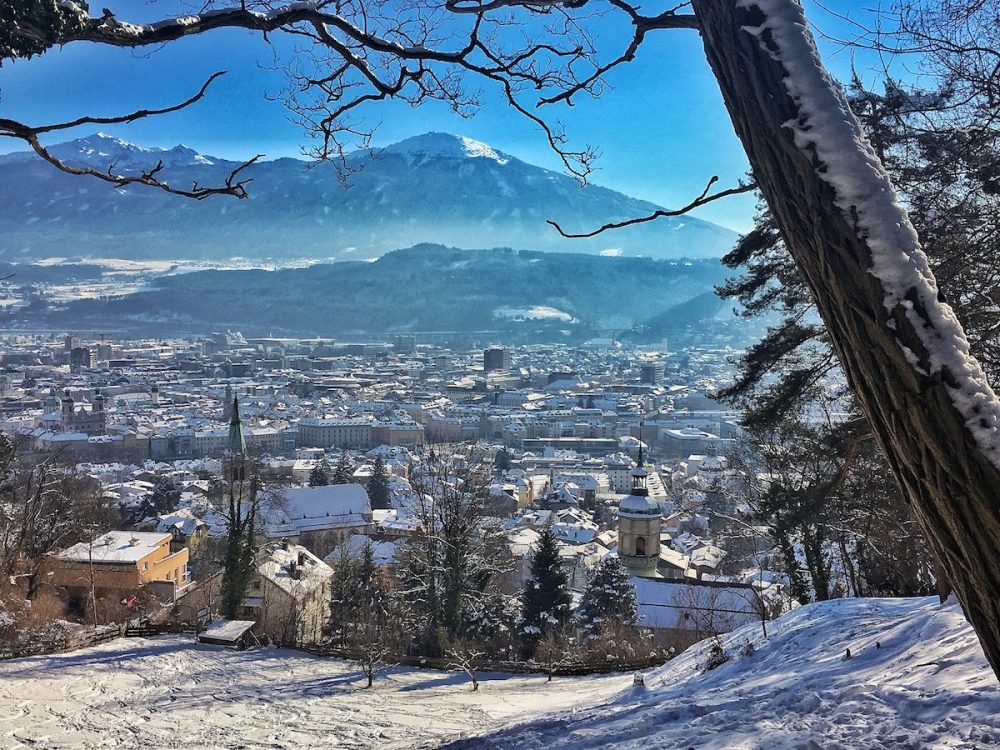
The view from the Gramarter hiking trail to the dreamy Hötting and the snow-covered Tyrolean capital. © Werner Kräutler
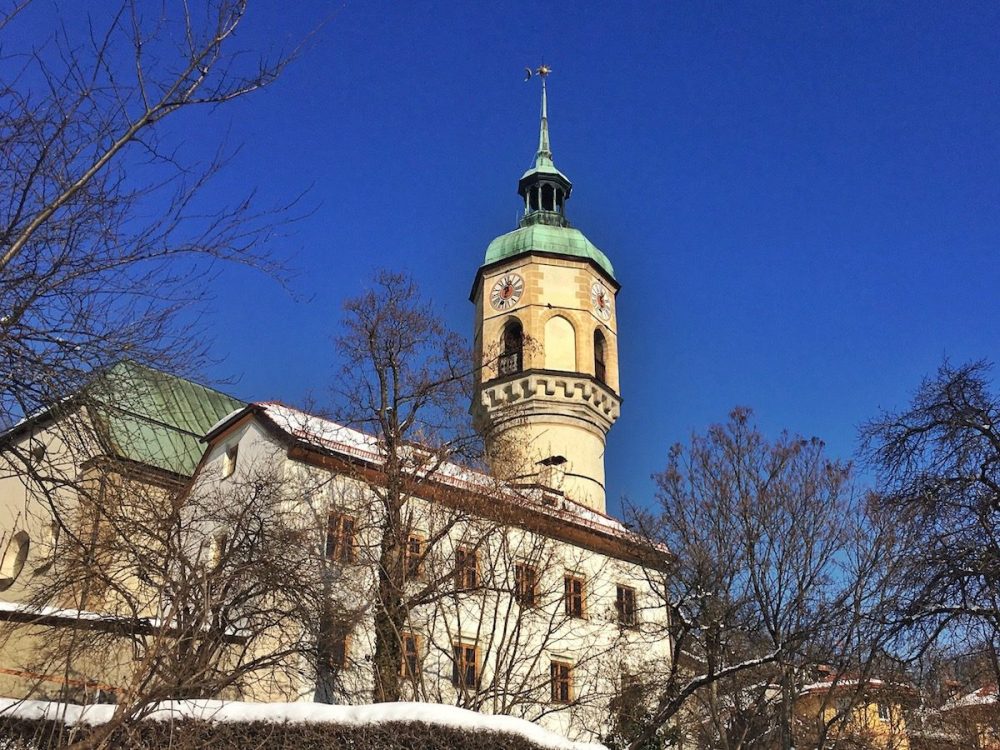
The gothic tower of the Hötting church is for me a magnificent landmark of this part of town. © W. Kräutler
Finally: a postcard view in a class of its own
On beautiful and cold winter days, a special view awaits the art-loving hiker: Mariahilf on the green Inn. In terms of beauty, elegance and architecture, the baroque row of houses is a match for the city centre around the Goldenes Dachl. The fact that you can also take a last look at the hiking route from the banks of the Inn seems like a reward.
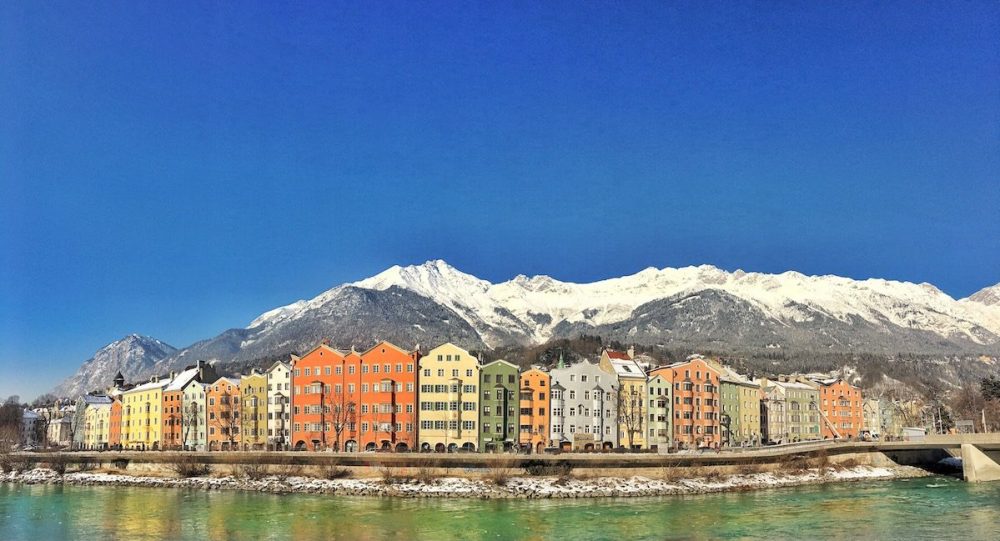
The baroque houses in Mariahilf: one of the most extraordinary ensembles in the capital of the Alps. © Werner Kräutler
Left:















